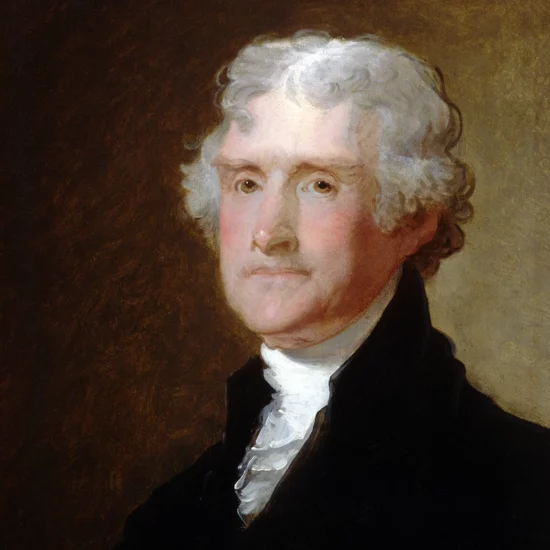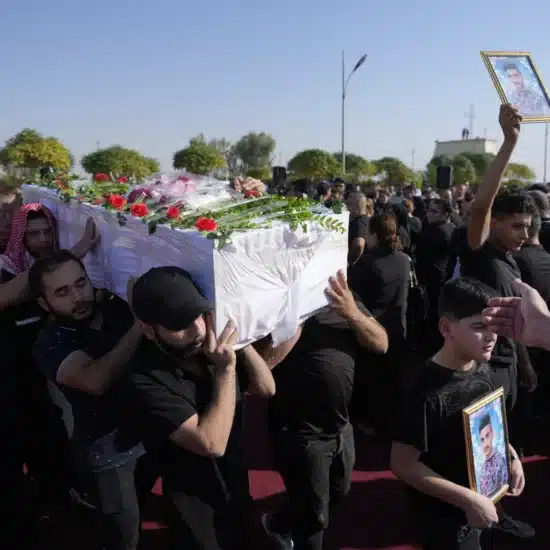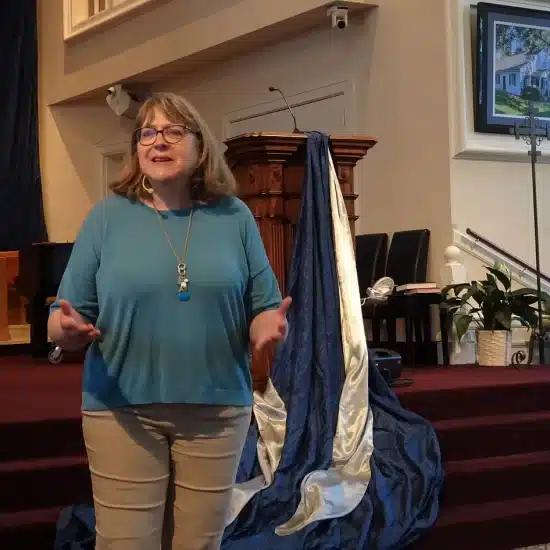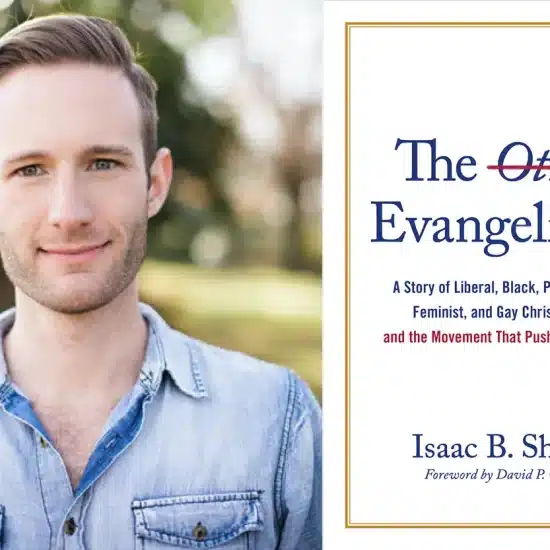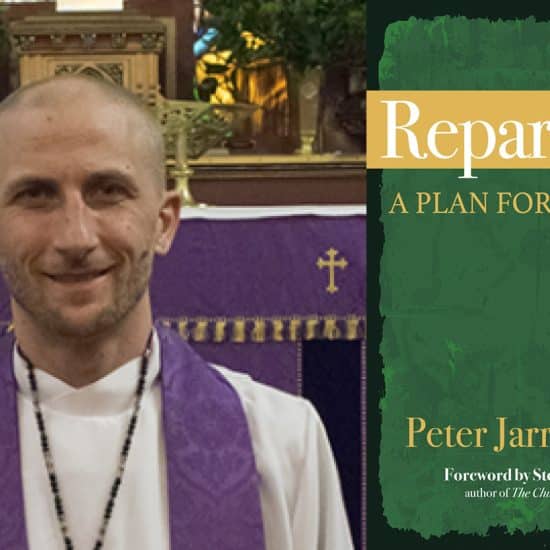About 350 people gathered at Fee Fee Baptist Church in Bridgeton April 19-20, 2002, to begin “a convention for people who don’t want to fight any more.”
Supporters of the Baptist General Convention of Missouri, now operating as Churchnet, will gather April 13-14 at Fee Fee to celebrate the organization’s 10th anniversary.
A move to form a new state convention emerged as the split between fundamental-conservatives and moderate-conservatives within the Missouri Baptist Convention began to grow.
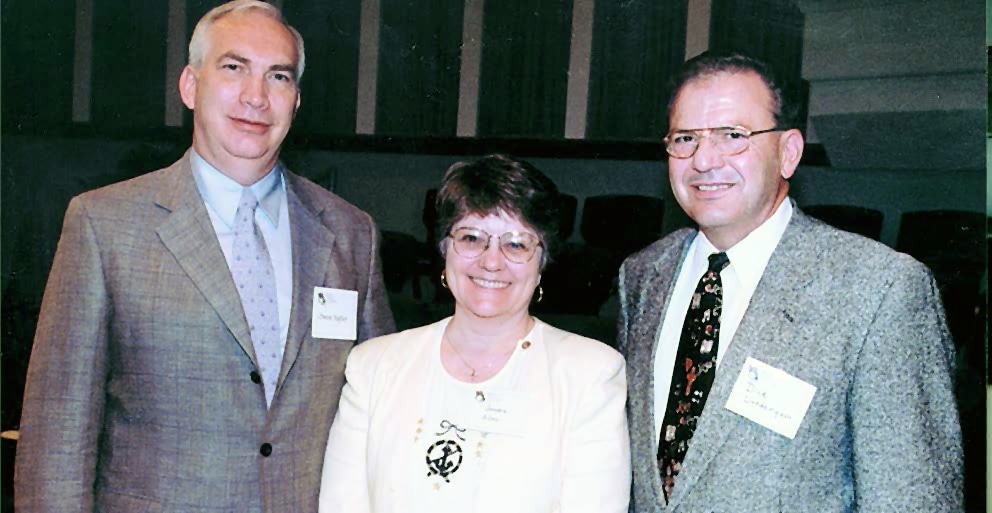 The first officers for the Baptist General Convention of Missouri — Vice President Owen Taylor, a minister from St. Louis; Secretary Sondra Allen, a layperson from Jefferson City; and President Dick Lionberger, pastor of First Baptist Church in Savannah at the time — pause for a photo at the BGCM’s first annual meeting at Fee Fee Baptist Church April 19-20, 2002. (Bill Webb photo)On Jan. 17, 2002, several individuals gathered at First Baptist Church in Sedalia to discuss the Missouri Baptist Convention’s decision to escrow funds that had been budgeted for five formerly affiliated agencies. In 2000 and 2001, The Baptist Home, Windermere Baptist Conference Center, Missouri Baptist University, the Missouri Baptist Foundation and Word&Way had filed changes in their governing documents to allow each to elect its own trustees.
The first officers for the Baptist General Convention of Missouri — Vice President Owen Taylor, a minister from St. Louis; Secretary Sondra Allen, a layperson from Jefferson City; and President Dick Lionberger, pastor of First Baptist Church in Savannah at the time — pause for a photo at the BGCM’s first annual meeting at Fee Fee Baptist Church April 19-20, 2002. (Bill Webb photo)On Jan. 17, 2002, several individuals gathered at First Baptist Church in Sedalia to discuss the Missouri Baptist Convention’s decision to escrow funds that had been budgeted for five formerly affiliated agencies. In 2000 and 2001, The Baptist Home, Windermere Baptist Conference Center, Missouri Baptist University, the Missouri Baptist Foundation and Word&Way had filed changes in their governing documents to allow each to elect its own trustees.
Participants at the meeting also discussed the MBC’s move to exclude member churches, an interim funding proposal for the five agencies, the possibility of forming a new convention and possible core values. The Sedalia meeting attracted more than 350 people from more than 100 churches.
H.K. Neely, who served as the BGCM’s first executive director from 2002-2004, noted that the split in Missouri was a result of the same shift to the right that the Southern Baptist Convention had experienced.
“After the Missouri Baptist Convention began changing, many churches and individuals felt disillusioned and left out. Therefore, some of us started talking and meeting trying to determine the best way to minister to those churches and individuals in order to preserve our Baptist heritage,” Neely said by email.
The change in the SBC also was a reason Harlan Spurgeon, chair of the corporate documents committee, cited for a new state convention. “When the Missouri Baptist Convention was irretrievably lost to the fundamentalists in Missouri, many of us felt that historic Baptists had been betrayed. The Missouri Baptist Convention now reflected views and beliefs of the changed Southern Baptist Convention,” he said in an email.
“Historic Baptists in Missouri needed a state convention through which to express our mission fervor and to fellowship with like-minded Christians.”
A former BGCM president, Bill Miller noted, “There is little need, 10 years later, to try to [rehash] all the reasons [for a new convention]. But for those of us who were involved, it was a fresh start.”
At its organizational meeting, the BGCM adopted 10 core values:
• the history and heritage of Baptist life in Missouri
• financial support for all Missouri Baptist institutions
• cooperation with the SBC
• the Bible as the Word of God
• missions and evangelism worldwide
• the priesthood of the believer
• the autonomy of the local church
• the inclusion of all Baptists interested in cooperating for missions
• the church as God’s primary agent for his redemptive work and
• religious liberty for all.
Then-SBC Executive Director Morris Chapman refused to recommend that the Executive Committee recognize the new convention in Missouri, even though SBC leaders already recognized two conventions in both Texas and Virginia.
The SBC officially turned down BGCM’s request to send funds and mission gifts designated by member churches. Those congregations would have to send money directly to the SBC.
On June 14, 2002, the BGCM called Neely, who had been serving as dean of the Courts Redford College of Theology and Church Vocations and as vice president for denomination relations for Southwest Baptist University. He officially accepted the post on June 24 and began on July 1. The convention opened offices in Columbia.
Neely stepped down and Jim Hill became interim executive director in 2004, accepting the top post in 2005. Hill led the organization to restructure using the team approach to governance.
He also led the BGCM to close its Columbia office and rely on “virtual” or electronic “offices” for team members.
Voting members to the BGCM annual gathering in 2010 approved a strategic plan for 2011-2015 that included adopting an operational or “doing business as” name — Churchnet: A Baptist Network Serving Churches.
The organization developed a resource section on its website (thechurchnet.org) and provides an avenue for congregations to assist one another. It also has published a newsletter page in every Word&Way issue for several years.

